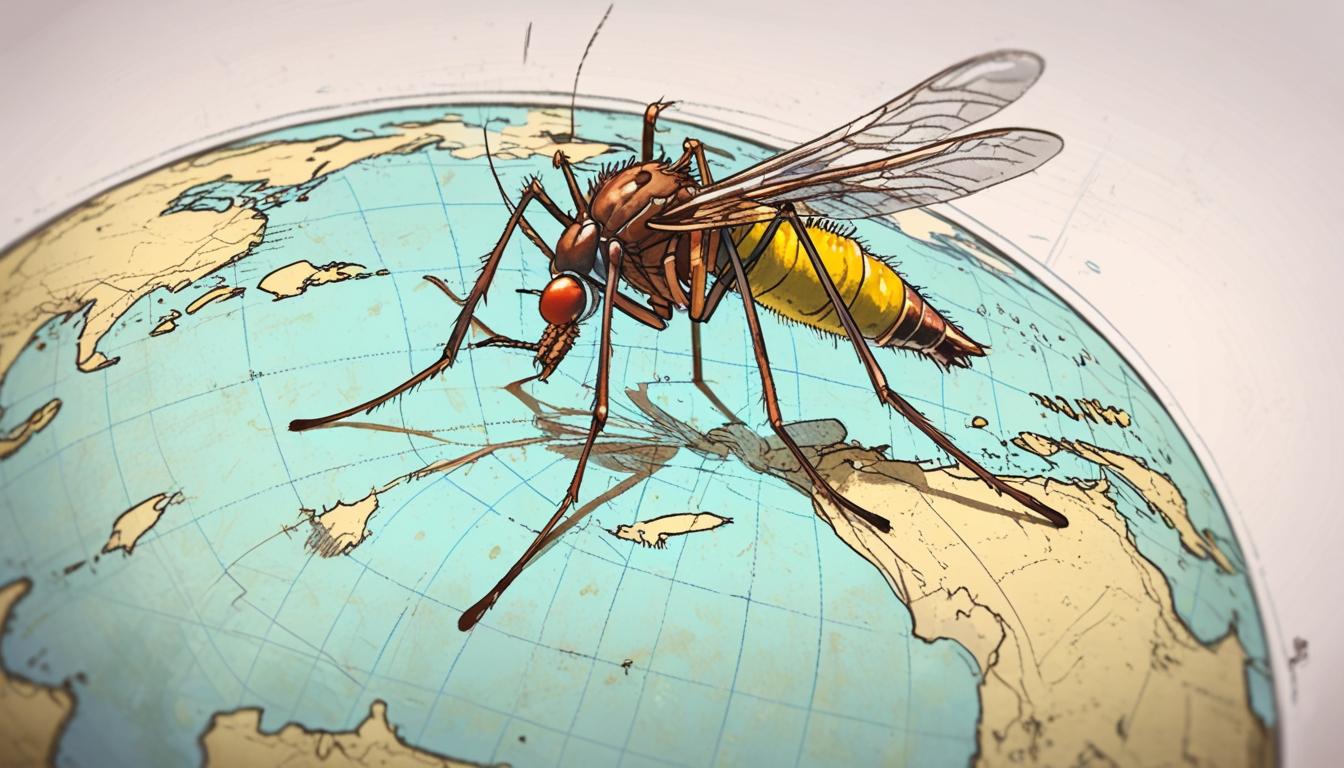A century after early warnings, scientists warn that yellow fever virus poses a growing risk of spreading beyond traditional areas, particularly into the Asia-Pacific region. With urbanisation, global travel, and climate change increasing transmission potential, there is an urgent need for improved vaccines, mosquito control, and surveillance to prevent a possible devastating pandemic.
Researchers have raised concerns that yellow fever virus (YFV) could extend its reach beyond its traditional boundaries, posing an unprecedented threat to billions of people in the Asia-Pacific region and beyond. This warning comes 100 years after early epidemiologist H.R. Carter first highlighted the risk of yellow fever (YF) invading Asia, concerns that remain highly relevant in today’s context.
Yellow fever is an acute viral disease transmitted primarily by the Aedes aegypti mosquito, which thrives in urban environments and has a strong preference for feeding on humans. Unlike many mosquito-borne illnesses, humans infected with YFV tend to develop high levels of the virus in their blood, making them efficient amplifiers for further transmission through mosquito bites. Both the virus and its primary vector originated in African forests before spreading to the Americas via the transatlantic slave trade in the 1600s. Historical outbreaks in North America, Europe, and the Caribbean were frequently sparked by ships carrying infected mosquitoes and passengers, leading to quarantines and public health measures that successfully curbed early epidemics.
With the advent of a highly effective vaccine in the 1930s and concerted mosquito eradication campaigns, notably in the Americas, transmission of yellow fever was largely halted in many parts of the Western Hemisphere. However, enzootic cycles of the virus persist among nonhuman primates and sylvatic mosquitoes in forested regions of tropical America and sub-Saharan Africa. More recently, human-amplified urban YF epidemics have re-emerged in Africa, driven by population growth, insufficient vaccination coverage, and challenges in mosquito control. Between 2016 and 2023, increased spillover events from sylvatic cycles have been documented on both continents, intensifying concerns about geographic expansion.
The Asia-Pacific region has so far remained free from yellow fever transmission, a fact that has long puzzled scientists given the widespread presence of Aedes aegypti mosquitoes and large susceptible populations exceeding two billion people. The recent study, published in the journal npj Viruses, explores this “enigma”, noting that while logistical barriers were once thought to prevent the virus’s spread into Asia, factors such as unprecedented urbanisation, extensive international travel, and expanded mosquito habitats have now increased the odds of invasion. In 2019 alone, over four billion international air travellers were recorded, with millions journeying to or from YF-endemic countries without vaccination. Such travel patterns elevate the risk of importing YFV into non-endemic countries harbouring competent mosquito vectors.
The researchers highlight that early or mild cases of yellow fever can resemble other flavivirus infections such as dengue, complicating prompt diagnosis. Additionally, cross-reactive immunity from viruses like dengue and Zika may influence disease dynamics, though the extent is yet to be clarified. Many countries with established Aedes aegypti populations lack robust infrastructure for mosquito control, vaccine distribution, and clinical case management, increasing the potential for rapid spread and overwhelming of public health systems in the event of an outbreak.
Historically, urban yellow fever epidemics have had severe societal impacts. For instance, the 1793 Philadelphia epidemic, one of the deadliest in US history, claimed around 10% of the population and led to profound changes in urban planning and epidemic responses.
The study also points to the collapse of vector control programmes, such as the US initiative launched in 1962 but abandoned in 1969 due to reinfestation from countries without similar efforts. The resurgence of Aedes aegypti in large parts of the Americas continues to facilitate yellow fever transmission cycles.
Prevention efforts face notable challenges: although an effective and safe vaccine exists, production is limited by current manufacturing methods, which are slow to scale during emergencies. Novel mosquito control technologies show promise but have yet to deliver reliable, large-scale, long-term impact. Surveillance and rapid response capacity in many at-risk areas remain inadequate to contain potential epidemics swiftly.
The authors underline the urgent need for expanded research into new vaccine platforms, sustainable vector control strategies, antiviral treatments, and integration of vaccination campaigns with mosquito management to build resilient public health systems capable of preventing outbreaks.
In conclusion, the analysts caution that the social, ecological, and epidemiological conditions in the coming years are conducive to a potential spread of yellow fever into previously unaffected regions, notably the densely populated Asia-Pacific. They state, “if a yellow fever pandemic were to occur in today’s world, its much higher lethality could make the COVID-19 pandemic pale by comparison,” reflecting the grave threat posed by possible future YFV outbreaks. The study signals that the global trends driving these heightened risks—including urbanisation, international travel, and climate shifts—are unlikely to diminish, reinforcing the necessity for ongoing vigilance and enhanced preparedness on a worldwide scale.
Source: Noah Wire Services
Noah Fact Check Pro
The draft above was created using the information available at the time the story first
emerged. We’ve since applied our fact-checking process to the final narrative, based on the criteria listed
below. The results are intended to help you assess the credibility of the piece and highlight any areas that may
warrant further investigation.
Freshness check
Score:
8
Notes:
The narrative discusses recent studies and events from 2016 to 2023, indicating that the information is relatively current. However, it references historical events extensively, and some data may not reflect very recent developments.
Quotes check
Score:
0
Notes:
There are no direct quotes in the narrative to verify or track back to an original source.
Source reliability
Score:
6
Notes:
The narrative does not specify its origin, but it discusses a recent study published in the journal npj Viruses, which suggests a reliable academic basis. However, without knowing the primary source of the narrative itself, we cannot fully assess reliability.
Plausability check
Score:
9
Notes:
The claims about yellow fever’s potential spread are plausible given factors like urbanisation, travel, and mosquito habitats. The narrative aligns with known risks associated with flaviviruses and the challenges in controlling mosquito vectors.
Overall assessment
Verdict (FAIL, OPEN, PASS): PASS
Confidence (LOW, MEDIUM, HIGH): HIGH
Summary:
The narrative presents a plausible scenario of yellow fever’s potential spread to the Asia-Pacific region, supported by recent studies and historical context. Despite a lack of direct quotes and unclear narrative origin, the information appears to be based on current research and well-established facts about the disease.













